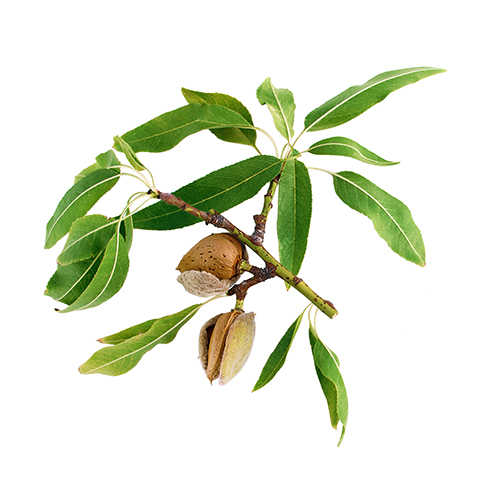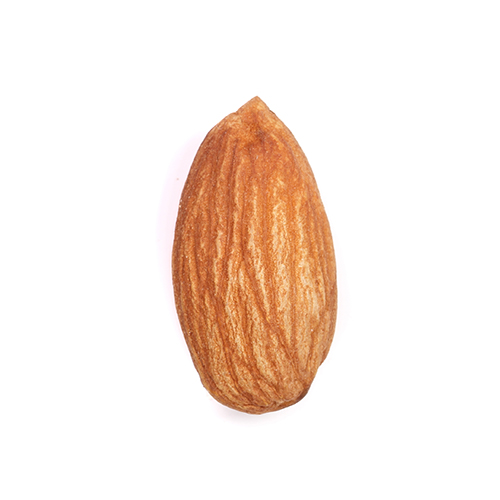Process
Belehris Orchard

Dormancy
May - July

Bloom
July - September

Maturing Crop
September - December

Hull Split
Early January
May - July
Almond trees are dormant during the cold winter period of the year, around May to July in Australia. The trees are bare during this time and are resting and storing energy for when the warm Spring weather begins. This enables them to be fit and ready to put their strength and focus on bearing the new season almonds.
July - September
White blossoms appear on the trees between late July to early September – peaking around beginning to mid-August where the bloom density is comparable to the orchards being blanketed by snow. At any given point during the bloom, alternate rows of trees will have blossoms as the Price variety flowers first, followed by the Non-pareil and lastly the Carmel.
As almonds are not self-fertile, bees are used to cross-pollinate the blossoms, which is achieved by bringing in beehives which are dispersed throughout the orchards.
Bees fly from flower to flower and achieve pollination. The varied timing of flowering for each variety is actually purposefully needed to ensure flowers are there prior to the Non-pareil flowering,(from the Price variety flowering) and then the Carmel ensures enough flowers for the bees to have access to for continuous pollination for the Non-pareil – for when the Price has completed blooming and starts to proceed to the next stage of its development.
September - December
From September to December, the blossom petals fall and leaves, new shoots and fuzzy greenish-grey fruit form. This fruit is the early stage of the almond hull, which covers and protects the kernel.
During this time, both the hull and kernel continue to mature; where cell division occurs and the nut grows bigger. At the early stages of the almond growing, you can open up outer of the shell to reveal the white like almond. When splitting the tender almond you can see a jelly-like consistency.
As it continues to mature through November – December the jelly substance gets harder and harder to the point where it has matured. The size has been determined and now the hull will eventually split.
Early January
From early January, the almond nut reaches full maturity, and the hull begins to split and opens up, revealing the almond shell inside.
This allows the nut to dry, giving it its signature crunch. After about a month, the crop is ready to harvest as the nut becomes detached from the tree.
Belehris Orchard

Harvest
Mid-Late February

Shelling
February - May

Sorting & Packing
For 12 Weeks After Shelling

Shipping
Local & International
Mid-Late February
This involves using our “Shaker” – a driven machine that has two extendable arms which clamp the trunk of the tree and shakes the tree for about 3-4 seconds, sending a vibration through the branches which detach the nuts from the stems.
The almonds drop to the orchard floor, where they are left to dry in the sun so they can reach their optimal moisture levels and are super crunchy.
The Non-pareil variety is harvested first, which is half of all the orchard, followed by the pollinators which consist of a quarter each of the orchard plantings.
The Pollinator varieties – the Price is harvested soon after followed by the Carmel variety last, which is harvested in May.
This is why the Non-pareil is always first to become available in the marketplace as it is harvested and processed first.
The almonds are “blown” to the middle of each row by a particular machine called the sweeper.
This machine forces air to push the product out from under the trees into a neat line. At the same time it “sweeps” the almonds to the centre of the rows, allowing the next piece of machinery the “pick-up” to drive over the top and sweep the almonds from the orchard floor.
Any dirt or sticks from the tree fall back onto the orchard floor through a mesh or are collected by the “de-sticker” component on the machine and are later discarded in a pile.
This is important to eliminate any damage the sticks can do to the product during any stage of the process.
Once the cart at the back of the pick up is full, we use radio communication with another tractor/cart operator to meet at the end of a row to empty from one cart to another.
The tractor operator then drives to our undercover storage facility where the almonds are emptied onto an elevator and via a conveyor belt, they are piled into cement bunkers.
This aspect of our operation is critically important, and one that is not performed by many almond orchards. It protects the almonds from the elements, of the weather and pests and reassures buyers that significant care and measures are in place to provide a high standard hygienic product.
The almonds are “blown” to the middle of each row by a particular machine called the sweeper.
This machine forces air to push the product out from under the trees into a neat line. At the same time it “sweeps” the almonds to the centre of the rows, allowing the next piece of machinery the “pick-up” to drive over the top and sweep the almonds from the orchard floor.
Any dirt or sticks from the tree fall back onto the orchard floor through a mesh or are collected by the “de-sticker” component on the machine and are later discarded in a pile.
This is important to eliminate any damage the sticks can do to the product during any stage of the process.
Once the cart at the back of the pick up is full, we use radio communication with another tractor/cart operator to meet at the end of a row to empty from one cart to another.
The tractor operator then drives to our undercover storage facility where the almonds are emptied onto an elevator and via a conveyor belt, they are piled into cement bunkers.
This aspect of our operation is critically important, and one that is not performed by many almond orchards. It protects the almonds from the elements, of the weather and pests and reassures buyers that significant care and measures are in place to provide a high standard hygienic product.
After Harvest
Our almonds are then loaded onto our custom-made trailer and delivered by our own truck to the hulling and shelling facility, where they are processed.
Although this is the only stage that is not performed by ourselves, we have carefully chosen this particular family-owned and operated establishment, as it has the most state of the art technology – providing a service that acknowledges the importance of being careful and vigilant with the almonds to minimize damage to them.
The almond kernels are stored in large plastic-lined bins, labelled according to variety and size.
This process is conducted for the Non-Pareil variety first, followed by the Carmel and Price.
The almonds are brought back to our premises again by our own equipment and is stored in our humidity-controlled cool room ready for the sorting and packing aspect.
The product is processed through our computerised packing facility. This is where colour sorters use wavelength detection technology to distinguish between, whole product, damaged product and any excess matter, such as leftover husks or shells.
Leftover matter flows through a chute into a waste bin – this is great for animal /bird feed.
The broken product is sent through an alternate chute, to be packed at a later stage as exclusively “broken” product. It is passed through the processing plant again where it is sorted, to obtain a beautiful looking second-grade product.
The premium product is then given a final inspection by 4 individuals on a sorting belt.
Lastly, our quality control person gives each carton a final inspection before it enters the metal detector and is sealed, ready to be dispatched to our awaiting customers globally to enjoy.
Local & International
We understand that buyers may want to secure a quantity of product for their annual usage and therefore we recommend discussing requirements before the new season commencing in March.
Contract arrangements can be organised – preferably anywhere between November – January for both export orders and domestic purchases to ensure that the required variety, size, and quantities will be available.
Sea shipment bookings and documentation can be easily arranged by ourselves, or we can deliver to the nominated Port in Australia, with documents to be completed by the buyer. We are happy to assist, either way, to ensure the process is achieved in a simple and timely manner.
